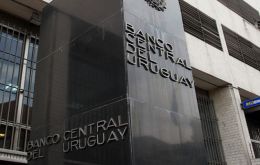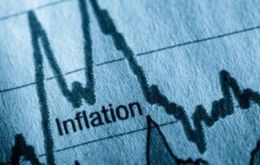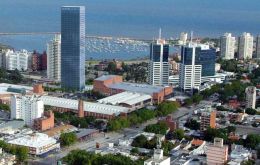MercoPress. South Atlantic News Agency
Tag: Uruguay inflation
-
Thursday, August 7th 2014 - 08:02 UTC
Uruguay inflation hard to break: in July it remained stubbornly above 9%

Inflation in Uruguay remains hard to break having reached 6.17% in the first seven months of the year, the highest since 2007 (6.38%) and over 9% in the last twelve months well ahead of the government's target of 3% to 7%, according to the latest figures from the stats office, INE.
-
Friday, July 11th 2014 - 01:37 UTC
Uruguay central bank admits inflation remains the main concern and pledges monetary contraction

Uruguay's Central bank confirmed that inflation remains the leading challenge and ratified the current monetary contractive policy with the M1 money supply index converging to 8% from its current 10.4%, in a 'not too distant horizon'.
-
Saturday, July 5th 2014 - 09:13 UTC
Uruguay's inflation index for June slightly down: 9.08% in twelve months

Uruguay's inflation index experienced a slight deceleration during the twelve months to June, from 9.18% in May to 9.08%, basically because of cheaper fresh food, frozen public utility rates including fuel, while a stabilized exchange rate for the US dollar with a strong Peso, helped with imported goods.
-
Tuesday, May 6th 2014 - 06:19 UTC
Uruguay's inflation index down 0.06% in April; four-month index 4.68%

Uruguay's inflation index was down 0.06% during April with the annual index standing at 9.18% and 4.68% in the first four months of the year, according to the latest release from the country's stats office, INE.
-
Friday, April 4th 2014 - 04:35 UTC
Uruguayan government feels it can tame inflation based on March's index

Inflation in Uruguay during March reached 0.58% accumulating 4.74% in the first quarter and 9.73% in the last twelve months, which is seen as 'positive' and an indication that recent measures to contain prices are 'being successful', according to Economy minister Mario Bergara.
-
Thursday, March 6th 2014 - 05:53 UTC
February confirmed that inflation remains Uruguay's main challenge

Inflation in Uruguay during February reached 1.66% which is equivalent to 9.82% in the last twelve months, the third highest in South America behind Venezuela and Argentina.
-
Friday, February 21st 2014 - 08:05 UTC
Uruguay lowers growth estimate for 2014 to 3% of GDP; inflation still a challenge

Uruguay's GDP this year is expected to expand by 3%, below the original estimate of 4%, according to Economy minister Mario Bergara currently in the United States on a tour to promote investments in the country and who was interviewed by Bloomberg.
-
Monday, February 17th 2014 - 10:00 UTC
Uruguay will appeal to a cut in state-run utilities rates, if necessary, to keep inflation under control

Uruguayan President Jose Mujica admitted that annual inflation would likely remain between 7 and 9% for the rest of his administration, above the government's target maximum, but he will appeal to a cut in state-run utilities rates if necessary to keep the index under control.
-
Wednesday, January 15th 2014 - 19:24 UTC
Uruguay among the world's ten countries with highest inflation

Uruguay is ranked among the world's ten countries with the highest inflation, having climbed from position 15 to 10 last year, only surpassed in Latin America by Venezuela and Argentina. Last year Uruguay ended with an inflation of 8.52%, well above the 4% to 6% target, and according to Central bank officials “it remains the main challenge for the country's economic policy”.
-
Thursday, December 5th 2013 - 18:49 UTC
Inflation in Uruguay during November climbs 0.2%, but still above target

Consumer prices in Uruguay during November increased 0.2% over the previous month with annual inflation reaching 8.51% compared to the 8.67% of October. Nevertheless in the eleven months of 2013, consumer prices have climbed 9.31%, which is a whole percentage point higher than the same period a year ago, according to the latest release from the country's Stats Office, INE.
